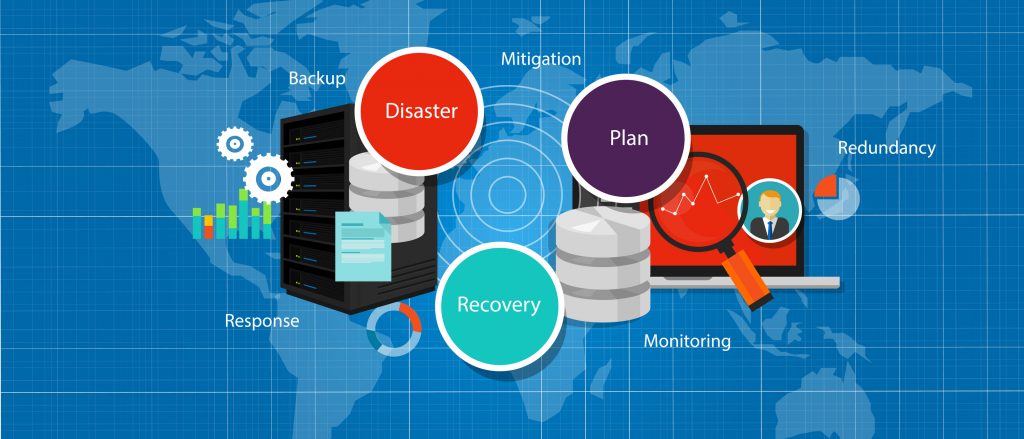The Role of Storage Accounts in Disaster Recovery
Storage accounts play a critical role in the disaster recovery process. They serve as a repository for storing and protecting an organization’s data, ensuring its availability and integrity in the event of a disaster. A robust storage account disaster recovery plan is essential for minimizing downtime and preventing data loss, which can have significant financial and reputational consequences for an organization.
Disaster recovery plans for storage accounts typically involve several key components, including data backup, redundancy, and failover strategies. Data backup involves creating copies of critical data and storing them in a secure location, either on-premises or in the cloud. Redundancy involves storing multiple copies of data in different locations, ensuring that data is available even if one location becomes unavailable. Failover strategies involve switching to a secondary system or site in the event of a failure or disaster, ensuring that operations can continue with minimal disruption.
Implementing a storage account disaster recovery plan requires careful planning and consideration. Organizations should regularly test and monitor their disaster recovery plans to ensure that they are effective and up-to-date. Cloud-based storage solutions can offer significant benefits for disaster recovery, including higher levels of availability, scalability, and cost-effectiveness. However, it is essential to consider factors such as cost, performance, and security when selecting a storage account disaster recovery solution.
Key Components of a Storage Account Disaster Recovery Plan
A robust storage account disaster recovery plan is essential for minimizing downtime and preventing data loss in the event of a disaster. Several key components contribute to the overall effectiveness of the plan and the organization’s ability to recover quickly from a disaster.
Data backup is a critical component of any storage account disaster recovery plan. Organizations should create copies of critical data and store them in a secure location, either on-premises or in the cloud. Regular backups should be performed to ensure that the most recent data is available in the event of a disaster. Backup strategies should also include testing and validation to ensure that data can be recovered quickly and accurately.
Redundancy is another essential component of a storage account disaster recovery plan. Redundancy involves storing multiple copies of data in different locations, ensuring that data is available even if one location becomes unavailable. Organizations should consider factors such as geographic location, network connectivity, and data replication when implementing redundancy strategies.
Failover strategies are also critical for ensuring that operations can continue with minimal disruption in the event of a disaster. Failover strategies involve switching to a secondary system or site in the event of a failure or disaster. Organizations should consider factors such as system compatibility, network connectivity, and data synchronization when implementing failover strategies.
Regular testing, monitoring, and updating of the storage account disaster recovery plan are also essential for ensuring its effectiveness. Organizations should regularly test their disaster recovery plans to ensure that they are working as expected and that data can be recovered quickly and accurately. Monitoring and updating the plan should also be performed regularly to ensure that it remains up-to-date and effective.
Cloud-based storage solutions can offer significant benefits for disaster recovery, including higher levels of availability, scalability, and cost-effectiveness. However, it is essential to consider factors such as cost, performance, and security when selecting a storage account disaster recovery solution.
Best Practices for Implementing Storage Account Disaster Recovery
Implementing a robust storage account disaster recovery plan is essential for minimizing downtime and preventing data loss in the event of a disaster. Here are some best practices for implementing a storage account disaster recovery plan:
Regular testing is critical for ensuring that the disaster recovery plan is effective. Organizations should regularly test their disaster recovery plans to ensure that they are working as expected and that data can be recovered quickly and accurately. Testing should be performed in a controlled environment to minimize the impact on operations.
Monitoring and updating the disaster recovery plan is also essential for ensuring its effectiveness. Organizations should regularly monitor their storage accounts and disaster recovery systems to ensure that they are functioning properly. Updates should be performed regularly to ensure that the plan remains up-to-date and effective.
Cloud-based storage solutions can offer significant benefits for disaster recovery, including higher levels of availability, scalability, and cost-effectiveness. Organizations should consider factors such as cost, performance, and security when selecting a cloud-based storage solution for disaster recovery.
Cloud-based storage solutions can also offer features such as automatic data replication, backup, and failover, which can help organizations achieve higher levels of availability and scalability. However, it is essential to consider factors such as data privacy, compliance, and security when selecting a cloud-based storage solution.
Organizations should also consider implementing a multi-layered approach to disaster recovery, including on-premises and cloud-based solutions. This approach can help organizations achieve higher levels of availability and redundancy, ensuring that data is available even in the event of a disaster.
Finally, organizations should ensure that their disaster recovery plan is aligned with their business continuity plan. The disaster recovery plan should be integrated into the organization’s overall business continuity strategy, ensuring that operations can continue with minimal disruption in the event of a disaster.
How to Choose the Right Storage Account Disaster Recovery Solution
Choosing the right storage account disaster recovery solution is critical for ensuring that an organization’s critical data is protected and available in the event of a disaster. Here are some key factors to consider when selecting a disaster recovery solution:
Cost is an essential factor to consider when selecting a storage account disaster recovery solution. Organizations should consider the total cost of ownership, including hardware, software, and maintenance costs. They should also consider the cost of downtime and data loss, which can be significant in the event of a disaster.
Performance is another critical factor to consider when selecting a storage account disaster recovery solution. Organizations should consider the speed and reliability of the solution, as well as its ability to scale to meet changing business needs.
Security is also essential when selecting a storage account disaster recovery solution. Organizations should consider the solution’s ability to protect data from unauthorized access, as well as its compliance with relevant regulations and industry standards.
When evaluating different storage account disaster recovery solutions, organizations should consider the following key features:
- Data backup and recovery: The solution should provide robust data backup and recovery capabilities, including automatic backups and fast recovery times.
- Redundancy and availability: The solution should provide redundancy and availability features, such as multiple copies of data and automatic failover, to ensure that data is always available.
- Scalability: The solution should be scalable to meet changing business needs, with the ability to add or remove resources as needed.
- Integration: The solution should integrate with existing storage accounts and applications, ensuring a seamless disaster recovery process.
- Ease of use: The solution should be easy to use, with a user-friendly interface and clear documentation.
When evaluating different storage account disaster recovery solutions, organizations should consider factors such as cost, performance, and security. They should also consider the solution’s ability to meet their specific business needs and provide a robust disaster recovery process.
Real-World Examples of Storage Account Disaster Recovery in Action
Storage account disaster recovery is a critical aspect of business continuity planning, and organizations in various industries have implemented successful disaster recovery strategies to protect their critical data and minimize downtime. Here are some real-world examples of storage account disaster recovery in action:
Healthcare Industry
In the healthcare industry, protecting patient data is essential for regulatory compliance and maintaining trust with patients. A large hospital system implemented a storage account disaster recovery solution that included real-time data replication, automatic failover, and regular testing. As a result, the hospital system was able to recover quickly from a ransomware attack, minimizing downtime and preventing data loss.
Financial Services Industry
In the financial services industry, ensuring the availability of critical systems and data is essential for maintaining customer trust and regulatory compliance. A global bank implemented a storage account disaster recovery solution that included geographically dispersed data centers, real-time data replication, and automatic failover. As a result, the bank was able to recover quickly from a power outage, minimizing downtime and preventing data loss.
Retail Industry
In the retail industry, ensuring the availability of e-commerce systems and customer data is essential for maintaining revenue and customer trust. A large e-commerce retailer implemented a storage account disaster recovery solution that included real-time data replication, automatic failover, and regular testing. As a result, the retailer was able to recover quickly from a distributed denial of service (DDoS) attack, minimizing downtime and preventing data loss.
These real-world examples demonstrate the importance of having a robust storage account disaster recovery plan and the benefits of implementing a storage account disaster recovery solution. By protecting critical data and minimizing downtime, organizations can maintain business continuity, regulatory compliance, and customer trust.
Common Misconceptions About Storage Account Disaster Recovery
Despite the critical importance of storage account disaster recovery, there are still many misconceptions about it that can prevent organizations from implementing effective disaster recovery strategies. Here are some common misconceptions and the truth behind them:
Misconception 1: Disaster Recovery is Too Expensive
One common misconception is that disaster recovery is too expensive for many organizations. While it is true that implementing a robust disaster recovery plan can require a significant investment, the cost of not having a disaster recovery plan can be much higher. Without a disaster recovery plan, organizations risk extended downtime, data loss, and reputational damage, all of which can have significant financial consequences.
Misconception 2: Disaster Recovery is Too Time-Consuming
Another misconception is that disaster recovery is too time-consuming and complex to implement. While it is true that disaster recovery planning requires careful consideration and planning, many disaster recovery solutions are now easier to implement and manage than ever before. Cloud-based storage solutions, for example, can provide automatic data replication and failover capabilities, reducing the time and effort required to implement a disaster recovery plan.
Misconception 3: Disaster Recovery is Only Necessary for Large Organizations
Some organizations believe that disaster recovery is only necessary for large enterprises with significant resources. However, small and medium-sized businesses (SMBs) are often at greater risk of data loss and downtime due to limited resources and IT staff. In fact, SMBs are often targeted by cybercriminals due to their perceived lack of security measures.
Misconception 4: Disaster Recovery is a One-Time Task
Finally, some organizations believe that disaster recovery is a one-time task that can be completed and forgotten. However, disaster recovery planning is an ongoing process that requires regular testing, monitoring, and updating to ensure that it remains effective. Organizations should regularly review and update their disaster recovery plans to account for changes in their IT environment and business needs.
Emerging Trends in Storage Account Disaster Recovery
As technology continues to evolve, so too do the trends and best practices in storage account disaster recovery. Here are some of the most exciting and innovative trends to watch in the coming years:
Trend 1: Artificial Intelligence and Machine Learning
Artificial intelligence (AI) and machine learning (ML) are increasingly being used to automate disaster recovery processes, making them faster, more efficient, and more accurate. For example, AI and ML can be used to automatically detect anomalies in system behavior and trigger disaster recovery procedures, reducing the need for manual intervention and minimizing downtime.
Trend 2: Multi-Cloud Disaster Recovery
More and more organizations are adopting a multi-cloud approach to disaster recovery, using multiple cloud providers to ensure maximum availability and redundancy. By replicating data and applications across multiple cloud environments, organizations can ensure that they are protected against outages and disruptions at any one provider.
Trend 3: Immutable Storage
Immutable storage is a new approach to data backup and archiving that involves creating write-once, read-many (WORM) storage volumes that cannot be modified or deleted. This provides an additional layer of security and protection against data loss due to accidental or malicious deletion, ransomware attacks, or other types of cyber threats.
Trend 4: Disaster Recovery as a Service (DRaaS)
Disaster Recovery as a Service (DRaaS) is a cloud-based disaster recovery solution that provides organizations with access to a fully-managed disaster recovery infrastructure, including data backup, replication, and failover capabilities. By outsourcing disaster recovery to a third-party provider, organizations can reduce the cost and complexity of implementing and managing their own disaster recovery solutions.
Conclusion: The Importance of Prioritizing Storage Account Disaster Recovery
In today’s digital age, data is the lifeblood of organizations, and protecting it is essential for ensuring business continuity and minimizing the impact of disasters. Storage account disaster recovery is a critical component of any organization’s disaster recovery strategy, providing a robust and reliable way to protect and recover critical data in the event of a disaster.
By implementing a storage account disaster recovery plan, organizations can minimize downtime, prevent data loss, and ensure that they can recover quickly and efficiently from any disruption. Key components of a storage account disaster recovery plan include data backup, redundancy, and failover strategies, all of which contribute to the overall effectiveness of the plan and the organization’s ability to recover quickly from a disaster.
When choosing a storage account disaster recovery solution, organizations should consider factors such as cost, performance, and security, and look for key features such as automatic backups, real-time replication, and easy restoration. Emerging trends such as artificial intelligence and machine learning are also shaping the future of disaster recovery, providing new and innovative ways to automate disaster recovery processes and improve overall resilience.
While some organizations may view storage account disaster recovery as too expensive or time-consuming to implement, the cost of not having a disaster recovery plan can be much higher. By investing in a robust storage account disaster recovery plan, organizations can protect their critical data, minimize the impact of disasters, and ensure that they can continue to operate effectively, even in the face of unexpected disruptions.






